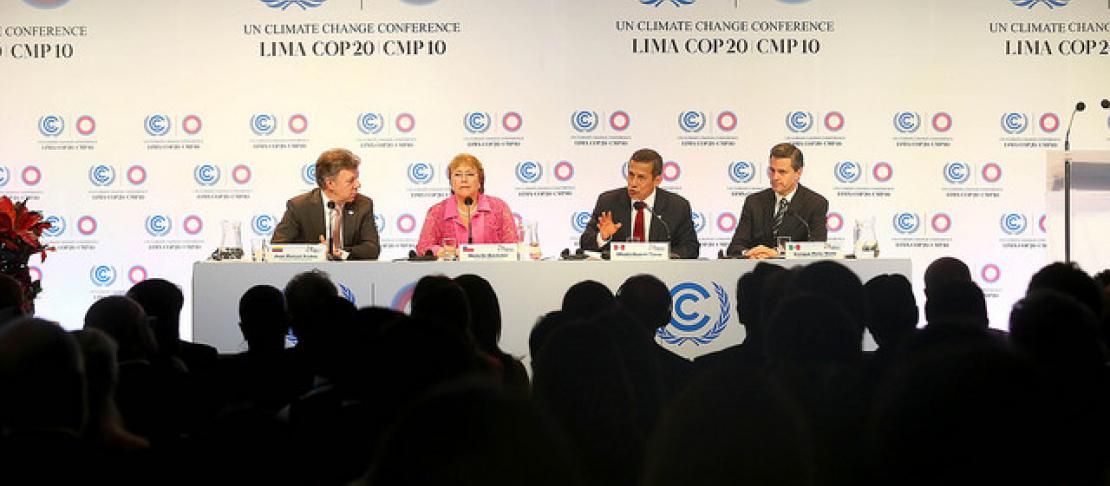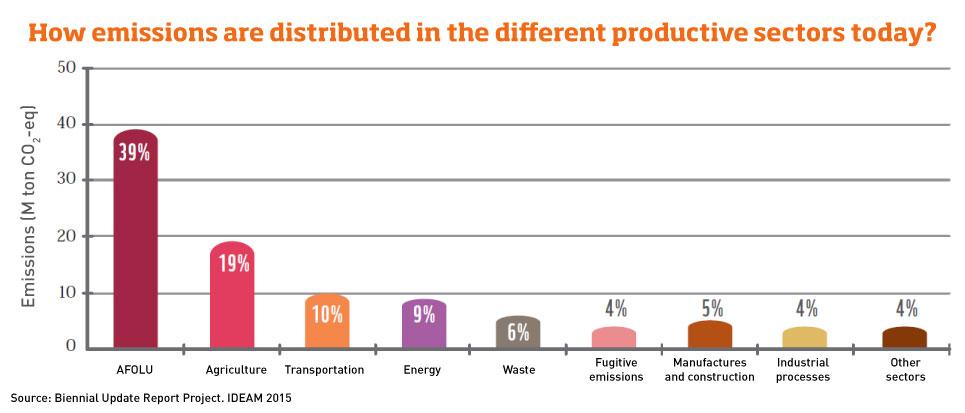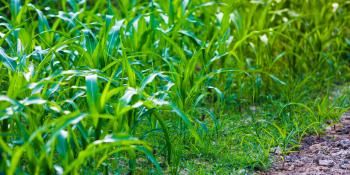Colombia's agriculture in the Intended Nationally Determined Contribution spotlight

Colombia's Intended Nationally Determined Contributions includes contribution to climate change adaptation in agriculture.
The world will make a historic compromise this December in order to effectively reduce emissions of greenhouse gases: after the climate change summit in Lima (COP20) last year, Parties of the United Nations Framework Convention on Climate Change (UNFCCC) presented their Intended National Determined Contributions (INDCs) last month in which they set their commitment to mitigate their emissions by 2030.
This commitment is critical, and regardless of the debate about which countries are the largest emitters, each Party is called to make its pledges to the extent possible; from a positivist perspective, a country with ambitious reduction commitments will have a bigger influence on climate negotiations and the authority to put pressure on their peers to do the same.
In this regard, Colombia has been recognized in different scenarios for its commitment to mitigation and adaptation to climate change; and although the country contributed just in 0.46% of the total global emissions in 2010, Colombia is aiming for an equitable and ambitious national commitment ahead of COP21 which, in turn, contribute to their sustainable development. Following this line, last September Colombia announced its contribution to curb the growth of their greenhouse gas (GHG) emissions to tackle climate change.
The country has pledged to reduce 20% of its GHG emission by 2030. This pledge may increase up to 30% in case they receive international support. This is a very ambitious figure; it seeks to generate changes in the country's development model without harming economic growth or deflecting efforts from national priorities such as overcoming poverty.
Colombia's INDC also includes its contribution to adaptation which is based in the implementation of ten specific actions with the purpose of directing development towards an economy, society and ecosystem resilient to climate change impacts. Two of these specific actions are for the agricultural sector:
Making that ten producers associations (gremios) such as rice, coffee, cattle, sugarcane and corn, improve their capacity to respond adequately to climate variability and change. Read more: Colombia committed to climate-smart agriculture
- Implementing fifteen technical working groups on climate and agriculture, articulated with the national working group and 1 million producers receiving agroclimatic information to facilitate decision-making in agricultural activities. CCAFS supported the establishment of the first four, and this successful approach is being implemented in the near future in two more departments.
Thinking globally, acting locally
The Ministry of Environment and Sustainable Development (MADS) was the institution that led the process of creating the Colombian INDC. The Ministry involved key partners such as Universidad de Los Andes, Fundación Natura and WWF-Colombia, as well as institutions of the productive sectors that contribute most to GHG emissions, such as forestry, agriculture, transport, energy, waste, manufacturing industry, to determine the best mitigation options.

How emissions are distributed in the different productive sectors in Colombia. Source: MADS.
The Biennial Update Report (BUR), which was developed by the Institute of Hydrology, Meteorology and Environmental Studies of Colombia (IDEAM), determined that the agriculture, forestry and other land uses (AFOLU) represent 58% of total emissions in the country, but at the same time, this sector has great opportunities to implement measures that help reduce emissions and increase adaptive capacity and improve productivity.
The CGIAR Research Program on Climate Change, Agriculture and Food Security (CCAFS) and the International Food Policy Research Institute (IFPRI) supported in the construction of the baseline of emissions growth by 2050 and mitigation scenarios through the assessment of potential emission reduction measures implemented in the AFOLU sector, using modeling tools developed by IFPRI, like changes in land use, cropping patterns and the International Model for Policy Analysis of Agricultural Commodities and Trade (IMPACT).
Since we started working, the University highlighted the absence of models in the country to do these analyses. We knew some specific analyses made by CIAT and other universities; so the models brought by CCAFS and IFPRI it's an excellent choice for the country."
Ángela Cadena
Associate professor, Universidad de los Andes
CCAFS brought together researchers from IFPRI and Universidad de Los Andes, along with institutions of the AFOLU sector in Colombia, such as the Colombian Corporation for Agricultural Research (CORPOICA), MADR, the Rural Agricultural Planning Unit (UPRA), the National Planning Department (DNP), IDEAM, Colombian Federation of Cattle (Fedegan) and other gremios in the sector, among many other actors who brought country information to the modeling tools, so that MADS can test what mitigation measures have the best potential to reduce emissions.
The modeling exercises include different alternatives such as the development of silvopastoral projects in livestock and reforestation; although the initial input of the modeling process was developed globally, the analysis of the measures was developed on a local scale, so it was necessary to incorporate local information that provided the institutions convened. The participation of AFOLU institutions was key in the process to have its own information of the country, regions and establish a more robust mitigation potential with less uncertainty, so that the MADS will set the ambitious goal unconditional reduction of 20%.
When we are building the information by sectors, we identified many challenges and many gaps in the management of the agricultural sector (...) then we ask for support for CCAFS so we started to make a complementary modeling; that allowed us to make a first connection with IFPRI and the three models they were developing, bring these models to the Colombian context to manage the information and what should be complemented to make a full use of the models."
Colombian Low Carbon Development Strategy Coordinator, MADS
With the information gathered from the process, Colombia was the first country in South America to present its INDC, and with a goal that bets on sustainable development which took into account all the productive sectors, especially agriculture, forestry and other land uses, as an integral part of its development model. The country is ready to reach the summit on climate change in Paris next December, with the hope that all countries are part of the commitment to effectively reduce the growing global warming.
Blog written by José Luis Urrea, CCAFS Latin America Communications Officer, with inputs from Katherine Ovalle and José Manuel Sandoval, Ministry of Environment and Sustainable Development (MADS).



